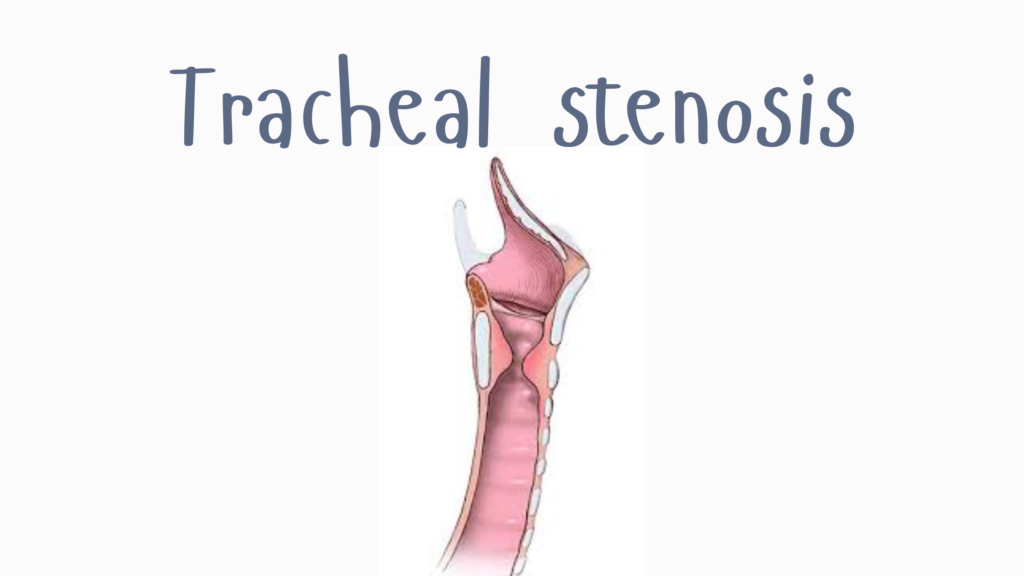Tracheal stenosis is a condition where the trachea (windpipe) becomes narrowed, limiting airflow to the lungs. This can range from mild to life-threatening and may occur anywhere along the trachea.
🧬 Causes of Tracheal Stenosis
🔹 Most Common (Acquired)
- Prolonged intubation or tracheostomy (most frequent cause)
- Trauma to the neck or airway
- Infections (e.g., tuberculosis)
- Autoimmune diseases (e.g., granulomatosis with polyangiitis, sarcoidosis)
- Tumors (benign or malignant)
- Radiation therapy
- Gastroesophageal reflux causing chronic inflammation
🔹 Congenital Tracheal Stenosis
- Rare; usually due to complete tracheal rings instead of C-shaped ones
- May occur with other birth defects (e.g., cardiac anomalies)
⚠️ Symptoms
Tracheal stenosis symptoms may resemble asthma or chronic bronchitis but don’t respond to usual treatments:
- Shortness of breath (especially with exertion)
- Stridor (high-pitched sound during inhalation)
- Hoarseness or voice changes
- Chronic cough
- Wheezing
- Frequent respiratory infections
- Feeling of choking or tightness in the throat
🧪 Diagnosis
- CT scan (with inspiratory/expiratory views) – visualizes narrowing
- Bronchoscopy – definitive; direct look at the trachea
- Pulmonary function tests – may show upper airway obstruction
- Laryngoscopy – if voice or vocal cord involvement suspected
📊 Grading of Stenosis (Cotton-Myer Classification)
Used for subglottic stenosis (often applies similarly in tracheal narrowing):
- Grade I: < 50% obstruction
- Grade II: 51–70%
- Grade III: 71–99%
- Grade IV: No detectable lumen
💊 Treatment Options
🩺 Conservative (for mild or stable cases)
- Observation and regular monitoring
- Treat underlying cause (e.g., acid reflux, autoimmune disease)
🛠️ Interventional (for moderate to severe cases)
✅ Endoscopic Options:
- Balloon dilation – temporarily widens the airway
- Laser therapy – removes scar tissue
- Stent placement – keeps airway open (used cautiously due to complications like granulation tissue)
🧠 Surgical Options:
- Tracheal resection with end-to-end anastomosis – gold standard; removes the narrowed segment
- Tracheoplasty – reconstructive procedure, often in congenital cases
🛡️ Prognosis
- Excellent outcomes with early diagnosis and proper treatment
- Recurrence possible, especially if underlying cause is not controlled
- Requires ongoing follow-up in moderate to severe cases
❗ When to Seek Immediate Help
- Difficulty breathing at rest
- Stridor or noisy breathing
- Cyanosis (bluish skin/lips)
- History of intubation with new breathing symptoms
